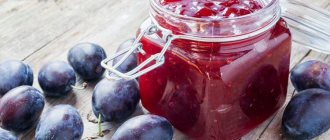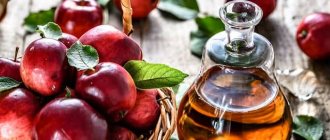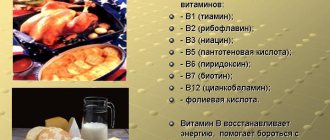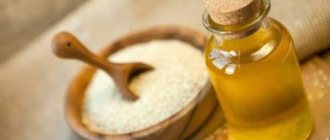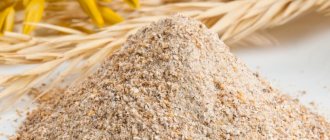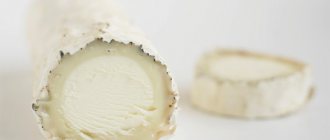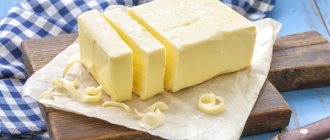Product history
The first mention of balsamic vinegar dates back to the beginning of the 11th century.
It was at this time that the future German ruler Henry II was presented with a barrel of valuable product. For a long time, balsamic remained a royal luxury. Common people could not afford it because of its high cost. There was no single recipe for preparing the product, but its aging period was initially at least 12 years. During the aging process, the vinegar was poured several times from one wooden barrel to another. Due to this, the liquid took on the aroma of the wood of the species in which it was stored.
A high-quality product is packaged in glass bottles
Benefit
Every poison can be a medicine, but if the dosage is exceeded, every medicine serves as a poison for the human body. This simple truth should not be forgotten when considering the components of your grocery set. The beneficial properties of balsamic vinegar essence include the following qualities:
- Normalization of the level of acid-base balance in the human body, resulting in the production of hydrochloric acid in the gastrointestinal tract of the consumer.
- Getting rid of reflux associated with acidity in the body's food system.
- Normalization of work in the human intestine.
- Stimulating the production of digestive tract enzymes (pepsins), which help increase salivation.
- During active weight loss, it acts as an additional means that helps prolong the feeling of fullness after eating.
- Strengthens the immune system of an individual.
- Helps slow down aging in the human body due to active inhibition of pathogenic cells.
- Decomposes proteins into amino acids, improving metabolic processes.
- Due to the percentage of sodium/potassium, it is definitely beneficial for the cardiovascular system.
- Reduces cholesterol levels in human blood.
Range
Classic balsamic is made from pure grape must (unprocessed, freshly squeezed juice). When preparing, white grape must is boiled until the liquid changes color and consistency.
Cheaper analogues, such as balsamic with honey or apple, are produced on an industrial scale. They are produced on the basis of grape or apple cider vinegar, and the list of additional ingredients contains:
- sugar;
- preservatives;
- sweeteners;
- flavorings.
The product is made from wort mixed with white wine vinegar. It retains a light hue, making it suitable for adding to white and yellow sauces. Unlike the original, white balsamic is less sweet.
IL Torrione bianco
Has a pronounced aroma and taste of honey. Includes the following components:
- grape vinegar;
- flower honey;
- caramel coloring.
Calorie content – 127 kcal.
Honey Ridge Farms
Vinegar from Modena
Balsamic from Modena falls into one of three main categories of balsamic vinegar:
- DOP (Tradizionale) – has the most stringent quality standards;
- IGP (Modena);
- Condimento.
Any variety of grapes, as well as grape vinegar, are used in production. The product is processed and packaged only in Modena.
Balsamic VInegar of Modena IGP
History of origin, composition and types of product
The origin of balsamic cream sauce is closely related to the origin of its main ingredient, balsamic vinegar. This seasoning was first mentioned in 1046, when it was presented as a gift to the future king Henry II. For a long time it was considered an aristocratic product and was available only to wealthy people of noble origin. This vinegar comes from the Italian province of Modena. Initially, it was used exclusively for medicinal purposes, hence its name “balsamic” - used for the preparation of balms.
Italy also came up with the idea of producing an exquisite viscous sauce based on this product. Its difference from vinegar is that it contains additional components, on which the characteristic thickness and viscousness of the product depends. It is no wonder that this sauce has found wide use in gourmet Italian cuisine, as well as among English gourmets.
Balsamic cream is a thick, viscous liquid with a bright berry aroma and a slight sweet and sour vinegar note. Its color varies depending on the ingredients in its composition, but the classic sauce has a rich wine brown color.
It is prepared from balsamic vinegar, which is boiled down during the cooking process to a viscous mass. It may also contain grape must, flour and a little lemon juice. As the liquid evaporates, the sauce acquires a uniform, thick, creamy consistency. This is where one of its names came from - cream. Real balsamic sauce does not contain sugar; the sweetness comes from the grapes. Often various fruits and berries, honey, various herbs and figs are added to it. Depending on the ingredients, the shade of the sauce may change: white, dark, pink, and so on. Balsamic sauces with strawberry, chocolate or caramel flavors are sometimes found in stores.
The most common types include:
- classic cream sauce;
- creamy;
- fruit;
- olive;
- honey;
- berry.
Harm of balsamic vinegar
A high concentration of the substance can cause harm to the consumer, so you should carefully read the harmful properties of the liquid seasoning:
- If the dosage is exceeded or excessive consumption of the essence, it can have a negative effect on the gastrointestinal tract. This is due to the fact that vinegar, infused for a long time, corrodes the walls of the stomach in large quantities. In the worst case scenario, it can cause a chemical burn to the esophagus.
- Some people have individual intolerance to the components that make up vinegar. Nausea occurs, which turns into vomiting, and allergic reactions on the skin (rash, redness). In this case, it is advisable to replace this type with another seasoning.
- Cheap vinegar is less beneficial than its expensive counterpart. Therefore, it is advisable not to save on it.
Vinegar of any kind, including balsamic vinegar, is contraindicated for those who suffer from high acidity, gastritis and peptic ulcers. Another reason for the ban on vinegar is individual intolerance.
You should refrain from taking balsamic vinegar during periods of exacerbation of any gastrointestinal diseases and in the presence of kidney stones and gall bladder.
Balsamic is not recommended for use by children under 7 years of age and diabetics. You should not eat cheap imitations.
If you have no contraindications, you should still use this product in moderation. If used in excess, it can harm the stomach. Italians, to protect the stomach from acid, use balsamic with the addition of a small amount of olive oil.
With lemon
- Time: 20 minutes.
- Number of servings: 12 persons.
- Calorie content of the dish: 449 kcal/100 grams.
- Purpose: refueling.
- Cuisine: Italian.
- Difficulty: easy.
The original lemon balsamic sauce has a high nutritional value due to the large amount of olive oil in the recipe. Just one tablespoon is enough per serving. This sweet and sour sauce goes well with baked, fried and stewed vegetables. The dressing needs to sit for a while. It is best served chilled with dishes.
Ingredients:
- olive oil – 120 ml;
- dark balsamic vinegar – 70 ml;
- lemon juice – 40 ml;
- honey – 20 ml;
- mustard – 7 g;
- salt – 5 g;
- ground black pepper – 2 g;
- shallots – 1 pc.
- Finely chop the shallots, place in a bowl and cover with vinegar.
- Add 6 tablespoons of olive oil to the mixture, stirring constantly.
- Add honey, mustard, lemon juice and spices, mix well.
- Place the mixture in the refrigerator for 4-5 hours.
- The dressing can be stored in a glass container for several months; it can be prepared for future use.
Calorie content and chemical composition
The calorie content of balsamic vinegar depends on its type. 100 g of the classic product contains 88 kcal, the same volume of white balsamic contains 85 kcal.
| Name | Quantity |
| Squirrels | 0.49 g |
| Carbohydrates | 17 g |
| Potassium | 112 mg |
| Calcium | 27 mg |
| Magnesium | 12 mg |
| Sodium | 23 mg |
| Phosphorus | 19 mg |
There are no fats in the product, and the content of iron, manganese, copper and zinc is minimal, less than 0.2 mg.
Composition and calorie content of balsamic cream sauce
Pictured is balsamic sauce
Whatever recipe options and types of ingredients are used to prepare the seasoning, the energy value changes slightly. The supplement can be safely included in any diet for weight loss.
Calorie content of balsamic sauce is 164-188 kcal per 100 g, of which:
- Proteins - 0.1-0.3 g;
- Fats - 0 g;
- Carbohydrates - 45-58 g.
In the creamy version, a small fat content is allowed - up to 2 g.
Since there is no heat treatment of the ingredients, the vitamin-mineral complex of balsamic cream sauce corresponds to the base - balsamic, and is enriched with many additives. Vitamins are represented by ascorbic acid, tocopherol, retinol. The mineral composition is dominated by sodium, chlorine, potassium, calcium, phosphorus, magnesium, manganese, iron, zinc, and copper. Balsamic sauce contains a high amount of organic acids, polyphenols, anthocyanins, and pectins.
Thanks to such a rich chemical composition, the seasoning not only replenishes the body’s vitamin and mineral reserves, but also helps it cope with the food load.
- See also the composition and calorie content of soy sauce
Adviсe
Balsamic vinegar is effective for preparing marinades for various types of meat, as a mixed salad dressing, and as an individual spice in various sauces. In addition to its traditional use in cooking, balsamic is effective in other areas:
- It is possible to perform a peeling procedure on the face.
- Using the essence on a wound allows you to disinfect it.
- Bacterial diseases in the throat can be cured by gargling with the addition of balsamic.
- Using liquid seasoning as an additive to a homemade hand cream increases the chances of beautiful palms.
Use in cooking
Balsamic vinaigrette is truly a versatile seasoning. It goes well with both first courses and desserts. With its help you can add a refined taste to meat dishes, fish and seafood dishes. It also makes a delicious marinade. Products marinated in balsamic cream with herbs acquire a refined, refined taste and pleasant aroma. It reveals the usual taste qualities of dishes, dilutes them with luxurious notes and gives them new elegant shades.
It is recommended to use it as a dressing for various vegetable salads, and also to include it in the recipe for cold appetizers. It goes well with various elite cheeses, so its use in a cheese plate is encouraged.
Baked dishes using balsamic sauce acquire a shiny, appetizing glazed crust and have an original flavor. Using cream you can beautifully decorate various desserts. Just pour this sauce over them, creating unique patterns. Ice cream, waffles, sweet pancakes, fruit and berry desserts are well suited for such purposes.
What does balsamic vinegar smell and taste like?
Balsamic is a dark, viscous liquid with a pronounced sweet or sweet-sour taste and a complex composition of aromas. During many years of storage in wooden barrels, the liquid acquires the aroma of the wood from which the barrels are made. The containers used are made from the following types of wood:
- cherry;
- oak;
- chestnut;
- Mulberry tree; ash.
The consistency of the product is suitable for decorating dishes before serving.
Benefits and harms
If you have high stomach acidity, the product is not recommended. In other cases, it has a positive effect on the body:
- strengthens the walls of blood vessels;
- improves blood circulation;
- normalizes heart rhythm;
- speeds up metabolism;
- prevents the development of urolithiasis;
- stabilizes the functioning of the central nervous system;
- has an antiseptic effect.
For inflammation of the prostate gland, take capsules with pumpkin oil and balsamic. The composition eliminates inflammation and improves blood circulation in the pelvic organs.
How to choose
The use of vinegar essence involves the following variations:
- When added to strawberries dessert. Adds a subtle hint to the sweetness of the strawberry flavor.
- Ideal as a dressing in salads. Can be served alone or mixed with other ingredients.
- Indispensable in preparing meat dishes, as well as in marinating.
- As a sauce, it can be used to decorate meat products.
The original balsamic is produced in Italy. Its label bears the prefix “tradizionale” and a distinctive yellow and blue quality mark. Thick glass bottles have a square bottom.
The aging period is determined by the color of the lid:
- 12-year-old balsamic from Modena is sealed with a cream-colored lid;
- 25-year-old - gold;
- 12-year-old vinegar from the province of Emilia-Romagna - red;
- 18 year old - silver;
- 25-year-old – golden.
The price depends on the aging time and ranges from 2 to 1000 euros per 100 ml.
Dessert of figs, mozzarella and mint, complemented with balsamic and honey
Only real balsamic vinegar has the properties described above. Counterfeit products most often contain sugar, flavorings and concentrates, which can cause harm instead of the expected benefit.
1. Real balsamic vinegar is produced mainly in Italy;
2. The inscription on the Tradizionale label indicates that the sauce was prepared in accordance with the cooking conditions;
3. Acidity should not be higher than 6%;
4. Look at the composition. It should not contain sugar, thickeners, dyes, preservatives or flavors.
5. Real balsamic is quite expensive. Its price cannot be lower than $50 per half liter.
Properties of balsamic vinegar
Nutritional value and composition | Vitamins | Minerals
How much does balsamic vinegar cost (average price for 1 liter)?
Moscow and Moscow region.
4000 rub.
If you want to surprise your guests, give a new sound and original taste to a well-known dish, add just a few drops of balsamic vinegar to a vegetable or fruit salad, marinade for poultry or meat, or a seafood dish.
Balsamic vinegar or balsamico was first mentioned in manuscripts in 1046 as a gift given by the Italian Marquis Bonifacio to the German Emperor Henry II.
Real balsamic vinegar has a richly dark color, a sweetish aroma and a rather thick, viscous consistency. Its use in food is primarily characteristic of Italian cuisine. The balsamic note is easy to recognize even if you have only tasted it once, although it is traditional to add it in very small quantities. By the way, the calorie content of balsamic vinegar is 88 kcal per 100 grams of liquid product.
Balsamic vinegar mixed with olive oil makes a wonderful salad dressing that is subtle and mild in flavor. In addition to salad, it is also used with pieces of fresh aromatic bread, which are dipped directly into the bowl with this delicious sauce.
Not only chefs of expensive restaurants, but also housewives all over the world happily use balsamic vinegar as a marinade for vegetables and meat. In both cases, a very delicate taste of the final dish is achieved. Perfectly complements balsamic and various seafood: for example, rice with squid or salad with shrimp and avocado. If you sprinkle the meat a little with this aromatic liquid during the frying process, you can achieve a new, unexpectedly pleasant flavor coloring of the culinary masterpiece.
The classic properties of balsamic vinegar are also evident when this product is combined in salads with cheese. Take, for example, a Mediterranean salad using green lettuce, soft goat cheese and ripe tomatoes. But the most unusual combination of this sweet and sour vinegar can undoubtedly be called a mix with aromatic strawberries.
conclusions
Balsamic vinegar is ideal for cooking, so it is worth purchasing for every housewife who wants to amaze others with her culinary masterpieces. In addition, a container with vinegar essence is indispensable for a woman who wants to take care of herself using natural remedies.
It is also worth paying attention to the composition of the product, which includes a huge amount of useful microelements needed by the human body. However, you need to be careful about your health and not overdo it with the consumption of the substance, as otherwise you can get health problems.
How to cook at home
At home, balsamic is prepared in several ways.
Recipe with cherries
Viscous vinegar with a pronounced sweet taste is prepared from the following components:
- Grape vinegar 9% - 2 cups
- Pitted cherries – 400 g
- Lemon – 1 pc.
- Brown sugar – 1 tbsp. l.
- Cinnamon – ½ tsp.
Prepare a valuable product in stages:
- Pour the berries into a container and mash them until they release their juice.
- Squeeze the lemon. Mix juice with other ingredients.
- Bring the resulting mixture to a boil.
- Cook over low heat for another ¼ hour. Remove from heat.
- Cool the container and refrigerate for 5-7 days.
Vinegar can be added to food immediately after it has been infused in the cold and filtered through cheesecloth.
Recipe with basil
Among the available methods for preparing balsamic vinegar is a recipe with basil. To make it you only need 2 ingredients:
- Vinegar 9% – 230 ml
- Basil – 20 g.
The cooking instructions are as follows:
- Wash the basils and dry with a paper towel.
- Place the leaves in a container and fill with vinegar.
- Infuse the contents in the refrigerator for 14 days.
The finished product acquires a rich green tint.
Basil based balsamic
Application
In cooking, balsamic is used in the preparation of meat dishes, vegetable and seafood salads, desserts, sauces and marinades.
Balsamic Vinegar Dressing for Shrimp and Vegetables
Sweet balsamic goes well with shrimp and spring vegetables. For refueling use:
- Balsamic – 1 tbsp. l.
- Lemon juice – 30 ml
- Lemon zest – 15 g
- Granulated sugar – 1 tsp.
- Olive oil – 1/3 cup
- Salt - ½ part tsp.
- Spices (ground pepper, dried herbs) – 1 tsp.
Cooking steps:
- Grind the zest on a grater.
- Mix zest powder with lemon juice and remaining ingredients.
- Beat the mixture with a whisk.
The prepared dressing is added to the salad.
Grana Padano Salad
To prepare a sweet dessert you need to take:
- Milk chocolate – 2 bars
- Cream – 1 tbsp.
- Peanuts – 100 g
- Balsamic – 1 tbsp. l.
Step-by-step instruction:
- Bring the cream to a boil, cool for 15 minutes, mix with balsamic vinegar.
- Heat the chocolate in a water bath, mix with cream, leave in the refrigerator for 2-3 hours.
- Make small balls from the chocolate-butter dough and place them on parchment.
- Grind the peanuts and sprinkle the crumbs over the balls.
The workpiece is left in the refrigerator for 1 hour.
If it is not possible to buy real balsamic vinegar, it is better not to buy a cheap fake, but to prepare it yourself at home. Although it will not be possible to repeat the original cooking procedure, there will still be more benefits than store-bought dyes and flavorings.
● Separate 2 cups of fresh cherries from the pits and mash in a glass container, add the zest of one lemon, 1 tablespoon of sugar and half a teaspoon of cinnamon;
● pour half a liter of 9% vinegar into the finished mixture (you can use grape vinegar to make it more similar to the original);
● boil the entire composition for 20 minutes;
● after that, pour everything together into a glass container and put it in the refrigerator;
● After 2 days, strain.
Balsamic dressing: what is it?
Balsamic sauce is famous throughout the world no less than black caviar or truffles. They are summarized by one property - these ingredients completely change the taste of any dish. At the same time, balsamic is so mixed with other products that it can deceive the taste buds of professional tasters.
The store sells different types of balsamic vinegar and cream, but the traditional one is produced only in Modena. It is in this Italian town and its surroundings that suitable grape varieties grow - Ancelotta, Lambrusco Grasparossa and Trebbiano.
What's good about balsamic vinegar?
Balsamic vinegar is used as a dressing for various dishes. It is prepared in the provinces of Italy by pouring grape must into barrels and aging it for 12 or more years. Barrels are used in different sizes. In the first year 30-liter, in the second 20-liter, then 16, 12, 9, 6, 5, 4 and 3 liters. Reducing the size of the container annually as the wort evaporates. Thanks to this process, vinegar has a viscous consistency, and most importantly, a grape-caramel flavor.
Beneficial features:
- Normalization of high blood pressure - enzymes in balsamic vinegar oxidize fatty acids, thereby reducing blood pressure.
- Weight loss - polyphenols accelerate the process of protein synthesis into amino acids, speeding up metabolism.
- Prevention of diabetes - vinegar protects the integrity of the beta cells of the pancreas, which regulate the percentage of glucose in the blood.
- Young skin and thick hair - resveratrol is known for its antioxidant properties that reduce the harmful effects of free radicals.
In addition to scientifically proven beneficial properties, balsamic vinegar is also known for folk recipes. Massaging the temples with a cloth soaked in vinegar helped relieve migraines. A gargle with one teaspoon of vinegar and a glass of water saved me from a suffocating dry cough and a sore throat.
Who should not use balsamico?
It is better not to add balsamic vinegar to food for people with recurrent gastritis and gastroesophageal reflux. In other cases, adding it in moderation will not do any harm. Pregnant women can eat seasoned dishes without reducing their usual concentration, but it is better to avoid heavy dosages due to the risk of heartburn.
Calories in balsamic vinegar
Balsamico contains 88 calories per 100 grams of product. Only a few drops are added to food, so it does not affect the calorie content of dishes.
What does balsamic taste like?
Connoisseurs of various sauces say that balsamic is similar to a mixture of Chinese black vinegar and pomegranate molasses. In fact, the taste of vinegar sauce depends on aging, grape varieties, barrel size and even wood types.
Classic balsamico has a sweet-sour taste with hints of grape, caramel and woody notes. This vinegar is aged in barrels made of different wood for at least 12 years. In supermarkets you can find a simpler type - Condimento. In terms of sweetness, it is not inferior to the classic one, but has a cherry tint and no woody notes.
Cheaper variations are not aged for years, so they have more acid in their taste. On the other hand, such sauces can be used to marinade meat, since the acid softens the fibers.
Balsamic vinegar and balsamic mousse - is there a difference?
Culinary experts call balsamic mousse boiled vinegar with the addition of sugar or honey, which at the end of cooking looks like a viscous paste.
There are two most commonly used recipes for making balsamic mousse:
- Italian - prepared from a mixture of olive oil, balsamic vinegar and lemon juice.
- French - consists of soy sauce, dry wine, balsamic vinegar and honey.
The difference between vinegar and sauce is not only thickness, but also taste. The sauce is much sweeter, but the vinegar makes a greater difference in the final taste of the dish.
Balsamic in cosmetology
Balsamic vinegar is used in home care. Hair treated with it acquires a shine like after polishing. It is also useful for facial skin problems. If you wipe your skin with diluted vinegar, the functioning of the sebaceous glands is normalized, the pores become cleaner, and the subcutaneous skin completely disappears.
Where is balsamic vinegar added?
Before you buy balsamic, decide what you need it for and what dishes you are going to cook with it. Chefs say they season ready-to-eat chilled dishes with mousse. When brought to 90 degrees, it loses some of the aroma. Italians add it to cheeses, salads, fruits and ice cream. Cheeses completely change the taste.
For ice cream and fruits, a cream sauce is used, which has a thick consistency and sweet taste. Meat dishes can be pre-marinated with balsamic dressing. In this case, it is enough to drizzle red meat, but poultry fillets need to be well watered. It is drier and does not absorb sauce well.
What do you eat balsamic sauce with?
Dishes with balsamic sauce become almost unrecognizable and have a special aroma. A small amount of vinegar changes the taste of familiar dishes so much that it was banned from being used in culinary competitions. Even experienced tasters find the additive confusing.
In general, they can be used for any dish, but each sauce has its own peculiarity:
- Raspberry balsamic vinegar goes well with fruits, ice cream and sweets.
- White balsamic vinegar goes well with mushroom sauces, fish and seafood. If you make a creamy sauce from it, you can flavor confectionery products.
- Pomegranate Balsamic Vinegar brings out the flavor of red meat and pasta.
Vegetable salads with Balsamic cream
Balsamic vinegar is suitable for both dietary salads and any culinary delights, but there are nuances to how to use balsamic for salads. For salads, use pure vinegar or diluted with olive oil. There is no need to boil it, as it will lose its flavor.
Salad with apples and walnuts
For the salad:
- 1 large apple;
- 1 bunch of lettuce;
- ¼ sweet Crimean onion;
- 3 tbsp. spoons of roasted walnuts;
- 100 grams of feta cheese.
For the sauce:
- olive oil 100 grams;
- balsamic vinegar 2 tbsp. spoons;
- mustard 1 tbsp. spoon;
- honey 1 tbsp. spoon;
- a pinch of salt and black pepper on the tip of a knife.
Chop the vegetables with apples and mix with fried walnut kernels. Cut the cheese into cubes and add to the vegetables. Now let's move on to the sauce recipe. Beat all ingredients with a mixer; there is no need to heat the resulting mixture. Before serving, pour the salad sauce over the dish.
Vegetable salad with balsamic dressing
Ingredients:
- 400 grams of Chinese cabbage;
- 400 grams of celery stalks;
- 4 medium cucumbers;
- 400 grams of cheese.
For refueling:
- olive oil and balsamic vinegar 2 tbsp. spoons;
- salt and pepper to your taste.
Cut the cucumbers into strips, and chop the cabbage and celery. Mix everything and add salt. Place in a heap on a dish and add a layer of cheese on top. Before serving, drizzle the dish with balsamic vinegar and olive oil dressing (prepared as in the recipe above).
Use with meat
Balsamic vinegar softens the fibers, so meat dishes with it are very tender. For the recipe we need 1 kg of pork pulp and a meat dressing based on lingonberries and balsamic.
Lingonberry sauce with balsamic:
- 500 grams of fresh lingonberries (can be frozen);
- ½ cup sugar;
- 1/3 balsamic vinegar.
Pour water over the lingonberries (so that they just cover the berries and boil until their skin begins to burst). Cool and rub through a sieve. Mix balsamic vinegar and sugar and pour mixture over lingonberry base. Boil the mixture until thick and remove from heat.
Pierce the meat with a knife so that the distance between the punctures is about 2-3 cm. Place it in a saucepan and pour sauce over it. The meat should sit in the marinade overnight. In the morning, wrap it in a baking sleeve and put it in the oven for an hour and a half. At the end, cut the sleeve and let the meat brown.
Dorado fish sauce
Ingredients:
- 1.5 kg dorado;
- 150 grams of lemon;
- fresh parsley.
Ingredients for the sauce:
- olive oil 100 grams;
- paprika 1 tbsp. spoon;
- balsamic vinegar 50 grams.
Clean the fish from entrails and scales. Then cut the lemon into slices, stuff it and parsley into the fish and sew up its belly. Bake the dorada at a temperature of 200°C for about 10 minutes.
While the fish is cooking, mix olive oil with paprika and balsamic vinegar. Before serving, pour the sauce over the fish.
How to make balsamic sauce at home
Before you look for a recipe for homemade balsamic vinaigrette, take a look at what you have in your refrigerator. Almost any berries and fruits will do - you can use fresh frozen ones. If you don't have any, add honey for sweetness.
Ideally you will need:
- 400 grams of raspberries, grapes or cherries (if there are no fruits, 100 grams of honey);
- 200 gr. Sahara;
- 200 gr. balsamic vinegar;
- 100 gr. olive oil;
- 1 person salt.
Mash the berries with sugar, let stand until the juice releases and rub through a fine sieve. Add the remaining ingredients to the juice and prepare the sauce in a water bath, evaporating the mixture until thick.
What can you replace balsamic with?
You can replace the tricky and expensive sauce with a condensed mixture of any fruit vinegar with sugar and dry wine. To prepare, take two parts of vinegar, and one part each of sugar and wine. Place the mixture on low heat and evaporate until thickened. You can also melt the sugar until it becomes liquid caramel and pour in sherry and boil for 30 minutes.
Where to buy balsamic sauce?
If you want to try traditional sauce, it is better to purchase it in specialized stores that sell goods from Italy. A small bottle of this sauce will cost about $200. Other manufacturers that are easy to find in any large supermarket are also suitable for everyday use.
Where to buy, price
The product can be purchased both at specialized points of sale and upon order via the Internet.
| Name | Aging period | Volume, ml | Cost, rub. |
| Il Classico | 8 years | 250 | 1380 |
| Banda Rossa | 20 years | 250 | 4122 |
| Traditional Balsamic Vinegar di Modena DOP Extravecchio | 30 years | 100 | 8200 |
In regular supermarkets, balsamic can be bought for 150-300 rubles.
Balsamic vinegar is an original food additive with a woody aroma. The product is characterized by the complexity of production due to the peculiarities of its long-term aging.
